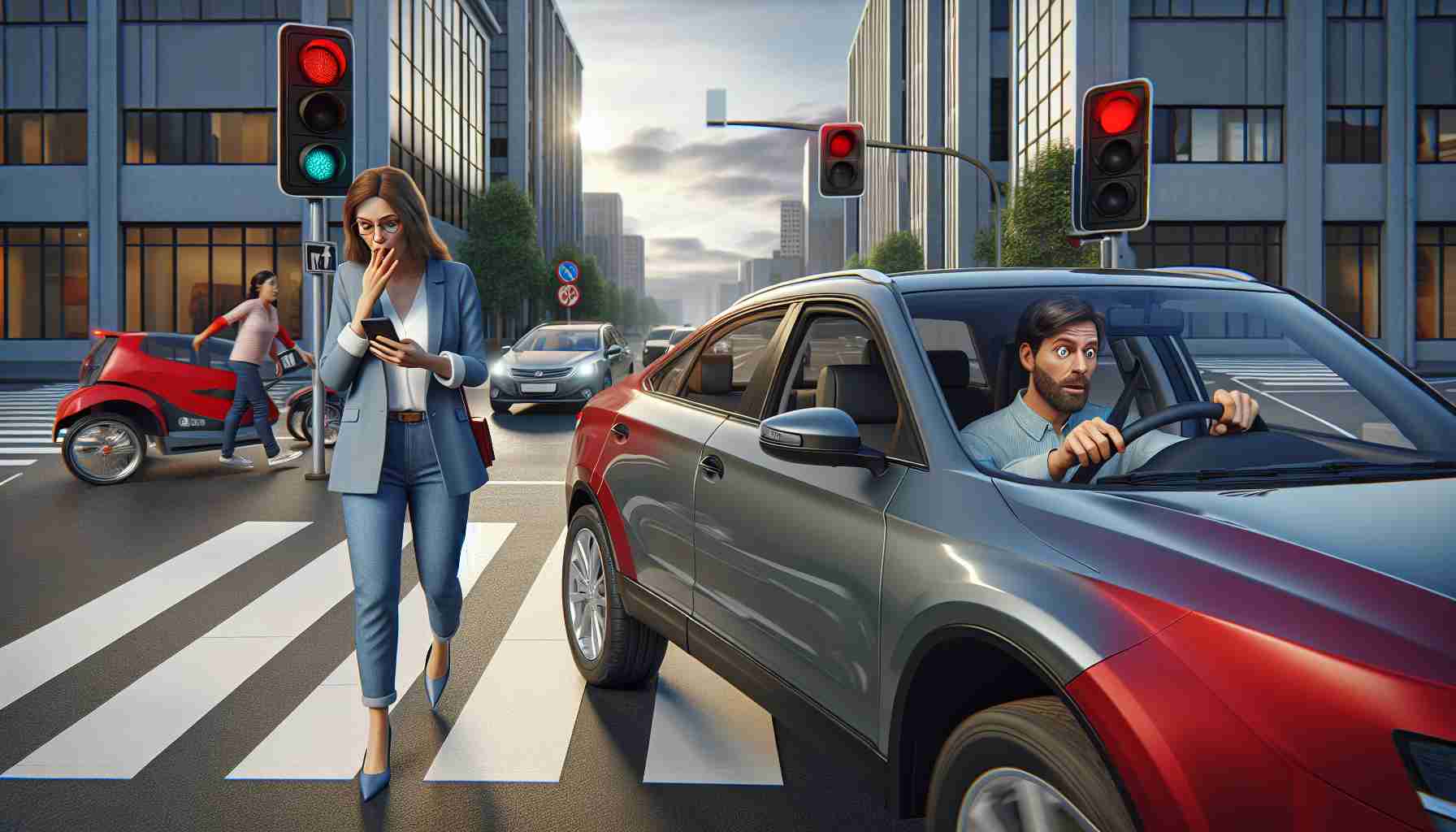In a recent push to increase road safety, the Automobile Citizen Association has highlighted the dangerous consequences of smartphone usage during driving. The group warns that even a brief glance at a phone can significantly impair a driver’s attention, potentially leading to hasty and retaliatory driving, which can escalate into severe incidents.
The issue of road rage linked to distracted driving has been underscored by several legal cases. In one instance, a taxi driver in Seoul was fined ₩2 million for reckless driving spurred by anger at another vehicle’s unexpected maneuver. This incident involved a pursuit followed by intimidating actions towards the other driver. Similarly, the Seoul High Court sentenced another driver to six months in prison, with a two-year probation, for threatening behavior and abrupt halts on the road.
Research supports the link between smartphone usage and impulsive driving tendencies. Collaborative studies by Philadelphia Hospital and the University of Pennsylvania indicate that drivers frequently using smartphones are more prone to reckless behaviors such as speeding and sudden lane changes. Furthermore, a study from the University of Warwick found that smartphone distraction diminishes drivers’ reaction times, increasing the likelihood of accidents due to poor distance maintenance and reactive maneuvers.
The U.S. National Highway Traffic Safety Administration (NHTSA) identifies speeding and failing to maintain safe distances as primary causes of accidents and cautions against impulsive driving patterns. Notably, sudden slow responses at traffic signals often provoke road rage incidents, resulting in needless conflicts.
The Automobile Citizen Association stresses the severe repercussions of road rage, which, although not individually criminalized, can lead to heightened legal penalties under specific assault or damage charges. An acknowledgment of road rage can result in significant penalties, including a 100-point demerit leading to a 100-day license suspension, posing significant risks for professional drivers.
The Hidden Costs of Distracted Driving: Uncovering New Consequences of Smartphone Use Behind the Wheel
Introduction
As the focus on road safety intensifies, an unexpected dimension of smartphone usage while driving emerges: the profound social and economic impact on individuals and communities. While the link between distracted driving and impulsive driving behaviors is increasingly recognized, it is crucial to explore additional effects not highlighted in prior discussions.
Beyond Road Rage: Economic Impacts of Distracted Driving
Distracted driving extends its consequences to the economic arena by affecting insurance rates. Frequent traffic violations and accidents linked to smartphone usage can drive up insurance premiums for individuals. Insurance companies often factor in driving records when calculating premiums, leading to higher costs for those with distracted driving incidents.
Moreover, communities bear the economic brunt of road accidents. According to data from the World Health Organization, road traffic crashes cost most countries 3% of their gross domestic product (GDP). Increased accident rates strain public resources, requiring investments in emergency services, legal systems, and infrastructure repair.
Psychological Toll on Drivers and Families
Beyond economic implications, there are significant psychological effects on drivers and their families. Individuals involved in road rage incidents may experience heightened stress and anxiety, disrupting their mental well-being and family dynamics. Families affected by accidents endure emotional trauma and potential financial instability, a ripple effect that underscores the need for comprehensive behavioral adjustments and awareness campaigns.
Advantages and Disadvantages of Smartphone Usage in Vehicles
While smartphones are convenient for navigation and communication, their disadvantages when used irresponsibly in vehicles outweigh potential benefits. The advantages include real-time traffic updates and the ability to summon help in emergencies. However, these perks often lure drivers into a false sense of security, leading to complacency in their driving habits.
Conversely, the disadvantages are stark: reduced reaction times, increased chances of road rage incidents, and the potential for severe accidents. Law enforcement agencies worldwide are finding it increasingly challenging to mitigate this issue, given the pervasiveness of smartphone use.
New Regulations and Technological Solutions
Addressing these concerns, countries are exploring various regulatory and technological solutions. Some jurisdictions have implemented stricter penalties for distracted driving offenses, including higher fines and license suspensions. Additionally, technology companies are developing apps that disable certain phone functions while the vehicle is in motion, aiming to curb distractions.
However, these measures raise questions about personal freedom and technological reliance. Should drivers be forced to rely on technology to ensure their safety, or should the focus remain on education and behavioral change?
What Can Be Done?
The challenge lies in balancing regulation, technological intervention, and personal responsibility. Public awareness campaigns emphasizing the human impact of road accidents can catalyze change. For deeper insights, consider visiting World Health Organization or National Highway Traffic Safety Administration for authoritative information.
Conclusion
Distracted driving is not merely an individual concern but a societal challenge with far-reaching implications. By understanding and addressing the broader effects of smartphone use behind the wheel, we have the potential to foster safer roads and healthier communities. As the conversation broadens, it becomes essential to engage with innovative solutions and public discourse to navigate this complex landscape meaningfully.























